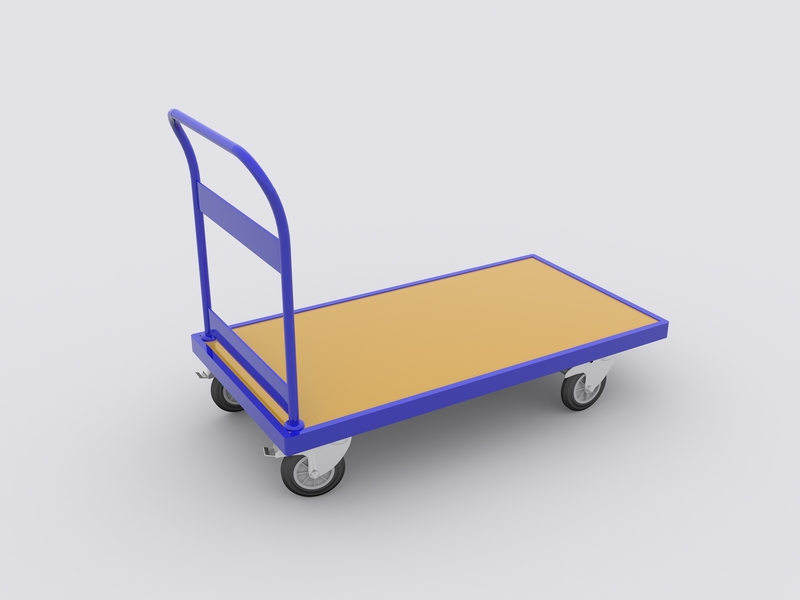Solo Strategies for Moving Heavy Objects Safely
Moving heavy objects by yourself can be a daunting and risky task. Whether you're rearranging furniture, relocating to a new home, or handling equipment for a DIY project, knowing the right solo strategies for moving heavy objects safely is crucial. This comprehensive guide will cover expert techniques, practical tips, recommended tools, and important safety measures to help you move heavy items independently--without hiring movers or risking injury.
Understanding the Risks of Moving Heavy Objects Alone
Before you start, it's essential to understand why moving heavy objects poses significant risks, especially when going solo. Common injuries include:
- Back strains and sprains
- Muscle tears
- Bruises and cuts
- Fractures and broken bones
- Slips, trips, and falls
With improper techniques or inadequate preparation, you may damage not only your belongings but also your health. However, equipping yourself with the proper strategies and tools can help mitigate these risks.

Essential Preparation for Solo Moves
1. Assess the Object and Your Path
Before lifting anything, evaluate both the object and the environment. Is the item awkwardly shaped, extra heavy, or delicate? Are there stairs, doorways, or tight corners? Take the following preparatory steps:
- Measure the item and check the clearance of entrances and passages.
- Remove any loose items from the path such as rugs, cords, or obstacles.
- Identify potential hazards like wet floors or uneven surfaces.
2. Plan Your Route
Mentally map out the entire route from start to finish. This helps minimize unexpected challenges and allows you to prepare accordingly. Consider:
- Where you can safely set down the object if you need a break.
- If doorways need to be propped open for easy access.
- Whether any helpers (such as friends on standby) are available in case of emergency.
3. Gather the Right Moving Tools
The use of proper moving equipment is a gamechanger for solo heavy lifting. Essential tools include:
- Furniture sliders and glides: For sliding objects across floors without scratching or damaging surfaces.
- Dollies and hand trucks: Enable you to wheel items instead of carrying them.
- Lifting straps or moving harnesses: Distribute the weight evenly, making lifting more ergonomic.
- Work gloves: Protect your hands from sharp edges and improve grip.
- Moving blankets and padding: Help to cushion fragile areas and avoid dents in walls/furniture.
Smart Solo Lifting Techniques
1. Use Proper Lifting Form
The cornerstone of safe solo heavy lifting is using the right posture. Always follow the basic rules:
- Bend at your knees, not at your waist.
- Keep your back straight and your feet shoulder-width apart.
- Hold the object as close to your body as possible.
- Lift with your legs, not your back.
- Avoid twisting while carrying heavy objects; pivot with your feet instead.
2. Break Items Down If Possible
Dismantle furniture or disconnect appliances when you can. Remove drawers, shelves, or legs to lighten the load and make objects more manageable for solo moving.
3. Try Sliding Instead of Lifting
Sliding objects with the help of furniture sliders, towels, or cardboard sheets significantly reduces effort. For wood or tile floors, plastic sliders are ideal; for carpets, use felt-based sliders.
4. Use Inclines and Leverage
Ramps, plywood sheets, or sturdy boards can help you move heavy items safely on your own. If you need to navigate stairs, employ a stair ramp with proper friction or slide items slowly one step at a time--it's safer than attempting to lift.
5. Utilize Makeshift Rollers
For extremely heavy items like appliances or safes, rolling can be easier than dragging. Place sturdy pipes or broom handles under the object and roll it along, repositioning the rollers as needed.
Choosing the Best Equipment for Solo Moving
Having the right equipment isn't just helpful; it's essential for injury prevention and efficiency. Here are some key tools for solo heavy-object moves:
Dollies and Hand Trucks
- Utility Dolly: Often called a hand truck, it's perfect for boxes or tall objects like bookcases. Remember to keep the stack height manageable.
- Furniture Dolly: Flat with four wheels for heavier, bulky items like couches, dressers, or appliances. Always secure items with straps.
- Stair-Climbing Dolly: Specially designed wheels for tackling staircases without needing a helper.
Furniture Sliders
- Ideal for solo moves on both carpet and hardwood; they reduce friction, making it easy to push or pull heavy items.
Lifting Straps and Harnesses
- Help distribute the load across your shoulders and legs, rather than your arms or back.
- Perfect for washing machines, couches, mattresses, and similar items.
Other Handy Tools
- Moving blankets - Protect your furniture and your walls during transit.
- Rope or ratchet straps - Secure items on dollies or inside vehicles.
- Corner protectors - Shield both your belongings and your home from accidental knocks.
- Work gloves - Ensure a solid grip and protect your fingers.
Special Safety Strategies for Moving Heavy Objects Alone
Know Your Limits
Perhaps the most important of all heavy object solo moving strategies is recognizing your limits. Never attempt to move a weight you're unsure of. If in doubt, divide the load, use more tools, or request help.
Use Protective Gear
- Wear closed-toe shoes with good grip to protect your feet and prevent slipping.
- Consider a back brace if you have a history of back issues.
- Don't forget hand protection to avoid cuts or pinched fingers.
Rest and Hydrate Often
Take regular breaks when moving particularly heavy pieces. A tired body is more prone to injury, so stay hydrated and rested throughout the process.
Keep Communication Handy
If you're moving alone, let someone know your plans and keep a phone within reach for emergencies.
Strategies for Navigating Stairs and Tight Spaces
Stairs and narrow corridors present unique challenges for anyone moving heavy items solo. Here's how to handle them safely:
Moving up or down stairs
- Use a stair-climbing dolly if possible.
- If none is available, place sturdy plywood planks with non-slip surfaces, and slide items carefully down one step at a time.
- Always keep the heavy end of the item closest to the ground.
- If you feel fatigue, set the object down and rest--never hurry on stairs.
Maneuvering Through Doorways and Hallways
- Measure doorways in advance and remove doors temporarily if necessary.
- Protect corners with moving blankets or corner guards.
- Use a gentle twisting motion to angle large items through tight spots rather than forcing or pushing aggressively.
How to Move Specific Heavy Items by Yourself
Moving a Couch Solo
- Stand the couch on its end to fit through doorways or corners.
- Use furniture sliders under the legs to glide along floors.
- If the couch is too big or heavy, detach legs or remove cushions to reduce weight.
Moving Appliances (Washer, Dryer, Refrigerator) Alone
- Unplug and let the appliance reach room temperature to avoid condensation.
- Empty contents and remove shelves or trays.
- Secure doors and cords.
- Use an appliance dolly with straps to keep the machine upright and balanced.
Moving Large Boxes or Safes Alone
- Slide onto a dolly or use lifting straps.
- If possible, empty the contents to lighten the load.
- Utilize makeshift rollers for very heavy safes, ensuring they are securely guided.
Common Mistakes to Avoid When Moving Heavy Objects Alone
- Overestimating your strength: Know your limits and seek help if needed.
- Forgetting safety gear: Gloves and sturdy shoes are non-negotiable.
- Under-planning the move: Always prepare the path before starting.
- Rushing: All moves should be slow, calculated, and smooth.
- Lifting with the back: Always bend at the knees.
- Neglecting proper equipment: Don't shy away from investing in sliders, dollies, or straps--they're worth it.
- Not clearing pathways: Remove all obstructions before moving anything heavy.
- Ignoring hydration and fatigue: Take frequent breaks.

Frequently Asked Questions About Solo Heavy Object Moving
What is the safest way to move something heavy by yourself?
The safest way to move heavy objects solo is to plan ahead, use proper lifting techniques, employ moving aids such as dollies or sliders, and avoid overexerting yourself.
What if I can't lift the object at all?
Try to divide the object into smaller parts, use rolling or sliding methods, or invest in mechanical aids like hand trucks. If it's still too heavy, seek professional assistance.
Can I move heavy objects upstairs alone?
With care and the right equipment (stair-climbing dolly or ramps), you can. However, stairs significantly increase risk, so never attempt unsafe maneuvers.
How can I protect my back when lifting solo?
Use correct form: bend at your knees, keep your back straight, hold the object close, and let your legs do the lifting. Consider wearing a back brace for added support.
Conclusion: Your Game Plan for Moving Heavy Objects Alone
Tackling the challenge of moving heavy objects by yourself doesn't need to be overwhelming. With the right preparation, equipment, and techniques, you can make even the heaviest household or office items manageable. Remember:
- Always plan your move thoroughly and prep your environment for safety.
- Invest in tools like dollies, sliders, and lifting straps to ease the process.
- Lift smart, not hard--proper technique is non-negotiable.
- Listen to your body's limits and ask for help when unsure.
- Prioritize protection for your hands, feet, and back.
- Be methodical--slow and steady wins the race for safe solo moves!
By implementing these solo strategies for moving heavy objects safely, you'll minimize risk, protect your home and possessions, and get the job done efficiently--all by yourself!



